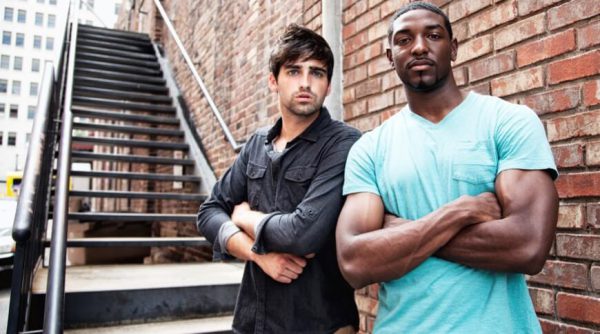We’re here for you during these uncertain times. Our support team is always available - contact us anytime, 24/7!
NY Junior License vs. NY Senior License
 Once your teen turns 16 and has their driving learner’s permit, it’s only a matter of time before they aim for their driver’s license. But before you get nervous about letting them loose on the open road, know that for young drivers, the privilege isn’t fully awarded until New York 16-18-year-olds have proven themselves worthy and capable. They do this by following New York state’s gradual-step licensing process, which starts with a junior license and ends with a senior license – the Graduated License Law.
While the Graduated License Law places restrictions on a driver with a junior license, it also incentivizes young drivers. They can take an additional defensive driving course NY to get a reduced auto-insurance rate.
But what is the difference between driving with a junior license and a senior license?
Distinct Driving Aims
A young driver with a NY junior license has studied the New York manual and driven mostly unsupervised with some restrictions to gain experience – or training – behind the wheel. With a senior license, a teen driver has proven their experience.
Because a junior license is a ticket to train, young drivers must stay within the state of New York when behind the wheel (or in a state with applicable permit regulations). But with a senior license, NY drivers can drive in any state of the country.
New Drivers Have A Probationary Period
Young drivers earning a junior license have a 6-month probationary period. That means, within that timeframe, conviction of any of the following traffic violations results in an automatic 60-day suspension of their license, which is followed by a secondary 6-month probationary period:
Once your teen turns 16 and has their driving learner’s permit, it’s only a matter of time before they aim for their driver’s license. But before you get nervous about letting them loose on the open road, know that for young drivers, the privilege isn’t fully awarded until New York 16-18-year-olds have proven themselves worthy and capable. They do this by following New York state’s gradual-step licensing process, which starts with a junior license and ends with a senior license – the Graduated License Law.
While the Graduated License Law places restrictions on a driver with a junior license, it also incentivizes young drivers. They can take an additional defensive driving course NY to get a reduced auto-insurance rate.
But what is the difference between driving with a junior license and a senior license?
Distinct Driving Aims
A young driver with a NY junior license has studied the New York manual and driven mostly unsupervised with some restrictions to gain experience – or training – behind the wheel. With a senior license, a teen driver has proven their experience.
Because a junior license is a ticket to train, young drivers must stay within the state of New York when behind the wheel (or in a state with applicable permit regulations). But with a senior license, NY drivers can drive in any state of the country.
New Drivers Have A Probationary Period
Young drivers earning a junior license have a 6-month probationary period. That means, within that timeframe, conviction of any of the following traffic violations results in an automatic 60-day suspension of their license, which is followed by a secondary 6-month probationary period:
- Speeding
- Tailgating
- Racing on public roads
- Driving recklessly
- Distracted driving (any distraction -- including conversing with passengers, eating, and adjusting radio)
- Driving while using any portable electronic device, including cellphone, GPS navigation, and tablet
- Any 2 traffic violations
- Master the journey to your California Driver’s License - Explore more at California Driver’s License!
- For More Information About Free NY Permit Practice Test, Click : Free NY Permit Practice Test
- Get the complete guide on Applying for a New California Driver’s License For Teens in our comprehensive article.
Coveted NYC Parking Going to Car-Share Companies
 You would never separate a momma bear from her cub, unless you wanted to get your arm ripped off. The same effect applies to New Yorkers and their NYC parking spots. Including the arm being ripped off.
So, why are car-sharing companies taking up New York City public parking?
It’s not punishment for people who don’t enroll in the one defensive driving course NY offers. Everyone knows the ultimate driving test is finding a sufficient parking space. But, car-share companies have been eating up all the free spots around New York City. Here’s why all the coveted New York City parking is going to car-share companies.
[framed_box]
You would never separate a momma bear from her cub, unless you wanted to get your arm ripped off. The same effect applies to New Yorkers and their NYC parking spots. Including the arm being ripped off.
So, why are car-sharing companies taking up New York City public parking?
It’s not punishment for people who don’t enroll in the one defensive driving course NY offers. Everyone knows the ultimate driving test is finding a sufficient parking space. But, car-share companies have been eating up all the free spots around New York City. Here’s why all the coveted New York City parking is going to car-share companies.
[framed_box]
These Companies Share Cars Not Parking Spots
More people than ever are opting into the idea of ditching the car. They’re finding affordable benefits in public transportation and ride sharing. The growing trend has increased demand for companies who are in the car sharing business, such as Zipcar. A high demand requires car sharing businesses to produce more cars to meet the growing need of consumers. Therefore, there’s been an uproar among locals. To make matters worse for New Yorkers, the city has passed a regulation to remove public parking to make space for company owned vehicles. The New Yorker reported, “the city is taking away about 300 parking spots in more than a dozen neighborhoods, mostly outside of Manhattan, and reserving them exclusively for vehicles from car-share companies.” This means the public is losing out on valuable parking. Moreover, The New Yorker reported this is the first time companies will be able to park their cars on the streets. The regulation is causing the public to erupt with anger. New Yorkers already experience looming dangers from parking their cars. Now, they have even less options. Most locals have to be conscientious of “aggressive ticket agents, unforgiving tow truck drivers and alternate side of the street regulations.” With these elements at play, parking in New York is a nightmare. [/framed_box] [framed_box]The Bright Side of the Street
Some companies might go hungry for power. Part of the program grants companies the permission to tow away private vehicles that are parked in their spot. It’s like that passive aggressive neighbor, but worse. The pilot program has allowed the companies to park their cars on the streets… at a cost. That cost being a whopping $765 that every company must pay before parking on the street. In relation to other costs, this price is low. In addition to this, car sharing companies are “required to provide discount fares to certain low-income New Yorkers and deploy cars with high fuel efficiency.” They may take our parking spots, but they certainly won’t take our fuel. These are just a few of the requirements that would give back to the public - after taking away from the public. With the rise of car sharing companies, more people could be incentivized to give up the car owner lifestyle. Public transportation, ride-sharing, and car sharing has made getting from one location to the next simple and affordable for everyone. Along with this, it helps combat rising greenhouse emissions produced from congested urban locations, such as New York City. Let’s not forget: if you give up on your car, you won’t have to pay for car insurance, visit the NY DMV, or enroll in an online traffic school. More people are getting rid of their cars just to save a few bucks here and there. [/framed_box]7-Day Support
Rain, snow, or shine - our support team is here 7 days a week ready assist you with any questions you may have.
(800) 660-8908
Privacy Policy

Refund Policy – Made Simple

Terms of Use

Nepal Relief Fund
A portion of today's sale will go towards helping the earthquake victims in Nepal.
Earn Money With Your Car
Register with UBER and receive a New York TLC Defensive Driving class for FREE by using the UBER provided coupon code.

 Live Chat
Live Chat


